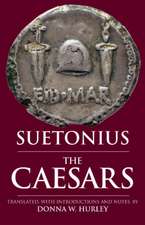The Renaissance and the Ottoman World
Editat de Anna Contadinien Limba Engleză Paperback – 14 oct 2024
| Toate formatele și edițiile | Preț | Express |
|---|---|---|
| Paperback (1) | 313.50 lei 22-36 zile | +30.23 lei 5-11 zile |
| Taylor & Francis – 14 oct 2024 | 313.50 lei 22-36 zile | +30.23 lei 5-11 zile |
| Hardback (1) | 802.07 lei 22-36 zile | +36.26 lei 5-11 zile |
| Taylor & Francis – 9 oct 2013 | 802.07 lei 22-36 zile | +36.26 lei 5-11 zile |
Preț: 313.50 lei
Nou
Puncte Express: 470
Preț estimativ în valută:
59.99€ • 62.26$ • 50.15£
59.99€ • 62.26$ • 50.15£
Carte disponibilă
Livrare economică 24 februarie-10 martie
Livrare express 07-13 februarie pentru 40.22 lei
Preluare comenzi: 021 569.72.76
Specificații
ISBN-13: 9781032921389
ISBN-10: 1032921382
Pagini: 352
Dimensiuni: 156 x 234 x 22 mm
Greutate: 0.65 kg
Ediția:1
Editura: Taylor & Francis
Colecția Routledge
Locul publicării:Oxford, United Kingdom
ISBN-10: 1032921382
Pagini: 352
Dimensiuni: 156 x 234 x 22 mm
Greutate: 0.65 kg
Ediția:1
Editura: Taylor & Francis
Colecția Routledge
Locul publicării:Oxford, United Kingdom
Public țintă
AcademicCuprins
Contents: Foreword; Section I Commercial, Artistic and Cultural Contexts: Blurring the boundaries: intellectual and cultural interactions between the Eastern and Western: Christian and Muslim worlds, Claire Norton; Sharing a taste? Material culture and intellectual curiosity around the Mediterranean from the 11th to the 16th century, Anna Contadini; The Lepanto paradigm revisited: knowing the Ottomans in the 16th century, Palmira Brummett. Section II Texts, Art and Music as Media for the Transmission of Intercultural Influences: The role of the book in the transfer of culture between Venice and the Eastern Mediterranean, Deborah Howard; The 'reception of the Venetian ambassadors in Damascus’: dating, meaning and attribution, Caroline Campbell; Giacomo Gastaldi’s maps of Anatolia: the evolution of a shared Venetian-Ottoman cultural space?, Sonja Brentjes; Turning a deaf ear, Owen Wright. Section III Renaissance Thought: Old and new demarcation lines between Christian Europe and the Islamic Ottoman Empire: from Pope Pius II (1458-1464) to Pope Benedict XVI (2005-13), Zweder von Martels; Turco-Graecia: German humanists and the end of Greek antiquity - cultural exchange and misunderstanding, Asaph Ben Tov; Positive views of Islam and of Ottoman rule in the 16th century: the case of Jean Bodin, Noel Malcolm. Section IV The Renaissance and the Ottoman Empire: Binding relationships: Mamluk, Ottoman and Renaissance bookbindings, Alison Ohta; Ottoman textiles in European markets, Suraiya Faroqhi; Mehmed II as a patron of Greek philosophy: Latin and Byzantine perspectives, Anna Akasoy; Bibliography; Index.
Notă biografică
Anna Contadini is Professor of the History of Islamic Art, Department of the History of Art and Archaeology, SOAS, University of London, UK. Claire Norton is Senior Lecturer in Islamic History at St Mary's University College, Twickenham, UK.
Recenzii
'The Renaissance and the Ottoman World is a first-class collection of essays.' Sixteenth Century Journal Volume '... written by scholars for the equally scholarly... To general knowledge, these essays on ideas, books, maps, music and events add patches of great depth and insight.' Brian Sewell's essential art books of 2013, London Evening Standard 'This book of essays is a blast of fresh air blowing through hermetically sealed rooms as it aims to portray the Ottomans not merely as hovering on the fringes of Europe, but as integral to Mediterranean culture, even becoming elements in the European Renaissance. Thirteen contributions highlight unusual areas, including technology, cartography, architectural inspiration and music.' Art Newspaper '... visually stunning as well as refreshing in its diverse views.' Renaissance Quarterly ’The range of the book is impressive, covering material culture, music, intellectual exchanges, art, cartography, historiography, textiles, and other issues ...a thought-provoking, wide-ranging book that convincingly argues that the Ottoman Empire participated as an accepted player in European affairs during the early modern period. Future studies will no doubt continue to add to many of the authors’ observations.’ European History Quarterly
Descriere
The fourteen articles in this volume bring together some of the latest research on the cultural, intellectual and commercial interactions during the Renaissance between Western Europe and the Middle East, with particular reference to the Ottoman Empire. The articles contribute to an exciting cross-cultural and inter-disciplinary scholarly dialogue














